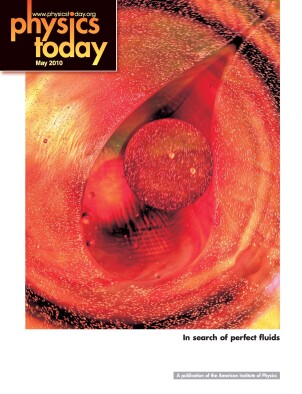Quantum Transport: Introduction to Nanoscience
DOI: 10.1063/1.3431333
The past two decades have seen a tremendous surge in the use of “nano” in engineering, physics, chemistry, biology, and various other disciplines. Interest in nanoscience arose in part from the discovery that nanostructures can have much-desired optical, electrical, thermal, and other features due to novel quantum-mechanical effects that appear at the nanoscale.
One of nanoscience’s most prominent subfields is electronic transport, which is governed by the quantum properties of charge carriers. We’ve all come to expect rapid progress in microelectronics, and scientists are now seeing promise in such relatively new fields as quantum manipulation and quantum information processing. So, in the past decade, there have been numerous experimental and theoretical works in nanoscale electronic transport. However, existing texts, such as Yoseph Imry’s Introduction to Mesoscopic Physics (Oxford University Press, 2002) and Supriyo Datta’s Quantum Transport: Atom to Transistor (Cambridge University Press, 2005), and articles in conference proceedings are limited to selected topics and do not attempt to cover the present breadth of the field.
In Quantum Transport: Introduction to Nanoscience, theoretical condensedmatter physicists Yuli Nazarov and Yaroslav Blanter seek to do precisely that. They set out to provide an accessible introduction to quantum transport and nanoscience and to meet the demand for an updated text for graduate and advanced undergraduate courses. Both authors are well-known authorities in the field, and rumors about their book project had spread for several years, creating substantial anticipation. Could Nazarov and Blanter meet such lofty expectations?

In my view, they have done so: Quantum Transport presents a comprehensive and almost complete overview of nanoscale electronic transport theory. The book is organized according to the authors’ areas of expertise. The titles of the six chapters indicate the topic coverage: “Scattering,” “Classical and Semiclassical Transport,” “Coulomb Blockade,” “Randomness and Interference,” “Qubits and Quantum Dots,” and “Interaction, Relaxation, and Decoherence.” Some subjects, such as one-dimensional systems, superconducting heterostructures, and quantum pumping, are integrated into those chapters. Others, including quantum Hall effects and numerical approaches, are not treated. I understand why: Recent monographs exist for those two topics, and with almost 600 pages, Quantum Transport is already quite long.
Nazarov and Blanter’s general approach is to develop theoretical methods and apply them to various examples in experimentally accessible limits, so as to demonstrate the close connection between experiment and theory in nanoscience. For instance, the scattering approach to transport through a quantum point contact is used to explain the complex physics of so-called multiple Andreev reflections between biased superconducting contacts. Experimentalists have employed that effect to determine the PIN code of atomic break junctions, which allows them to characterize the detailed chemical environment of the contact and determine transport properties such as the shot noise and even the full counting statistics.
Their presentation of the theory is surprisingly comprehensible and should be accessible to advanced undergraduate students. However, being theorists, they do not attempt to address advanced experimental methods. Readers interested in sample fabrication and measurement techniques will have to consult the original literature. Nevertheless, I think experimentalists will find value in the book because it successfully relates the theoretical concepts and results to physical examples.
I warmly recommend Quantum Transport to lecturers and students interested in the subject. It contains a lot of illustrations and exercises that make it suitable for a one- or two-semester course. Additionally, the text facilitates self-study through integrated questions that allow readers to check their understanding of the material. In view of its comprehensive coverage of numerous topics and its accessible style, Nazarov and Blanter’s text has the potential to become a standard reference in the field.
More about the Authors
Wolfgang Belzig. University of Konstanz, Konstanz, Germany .
